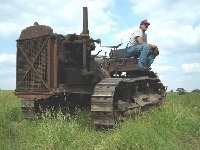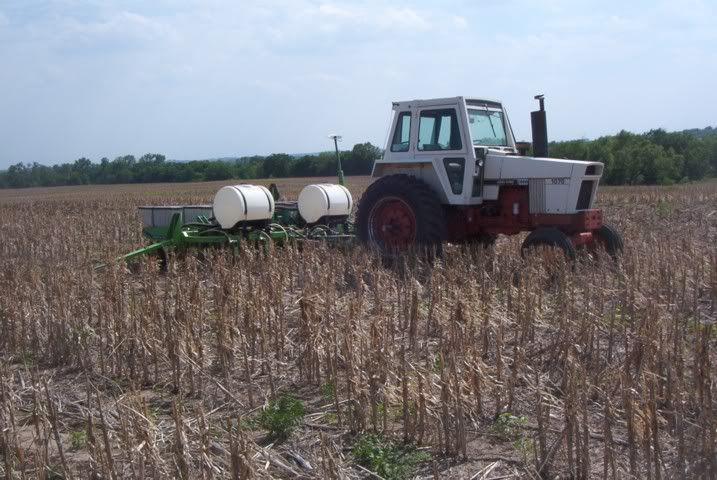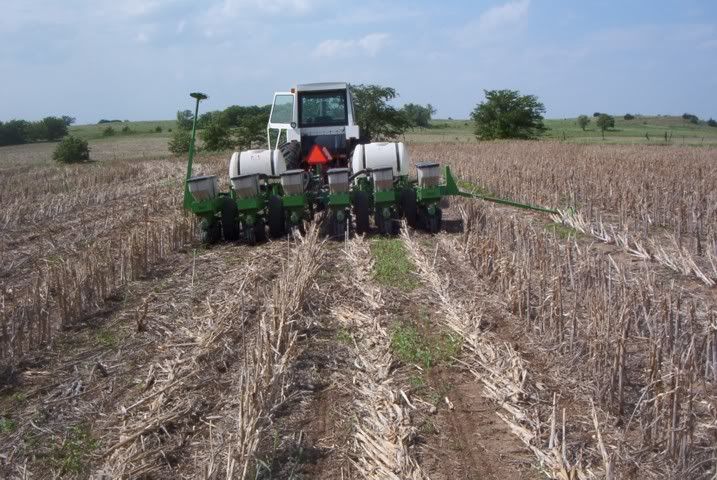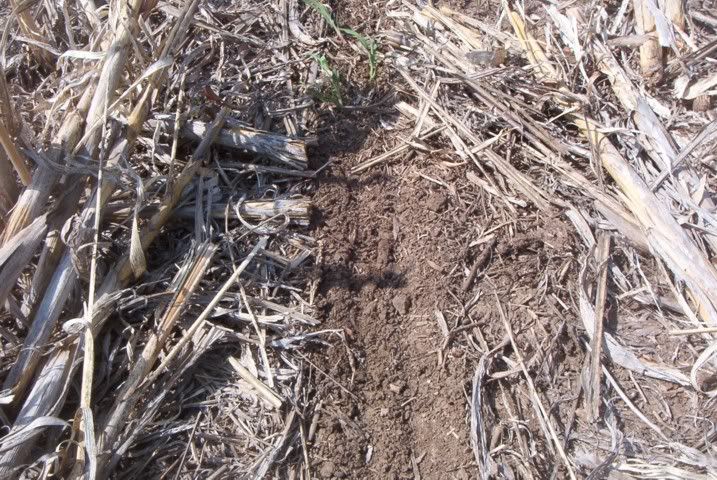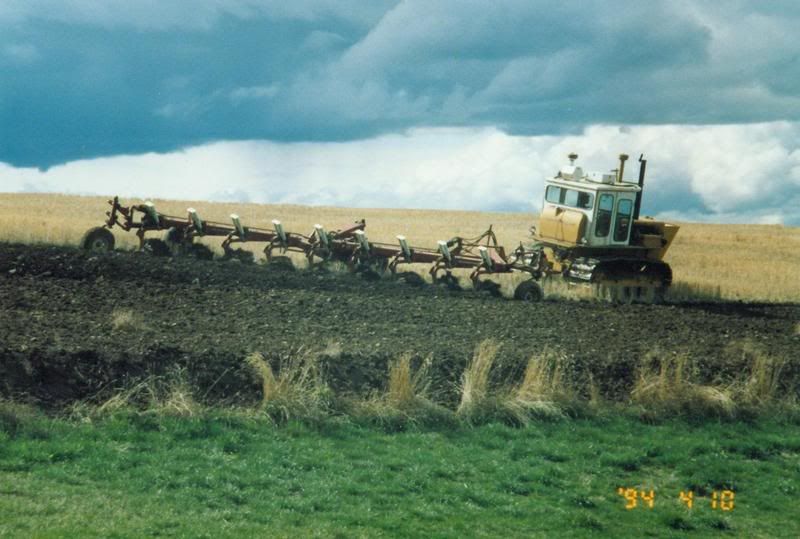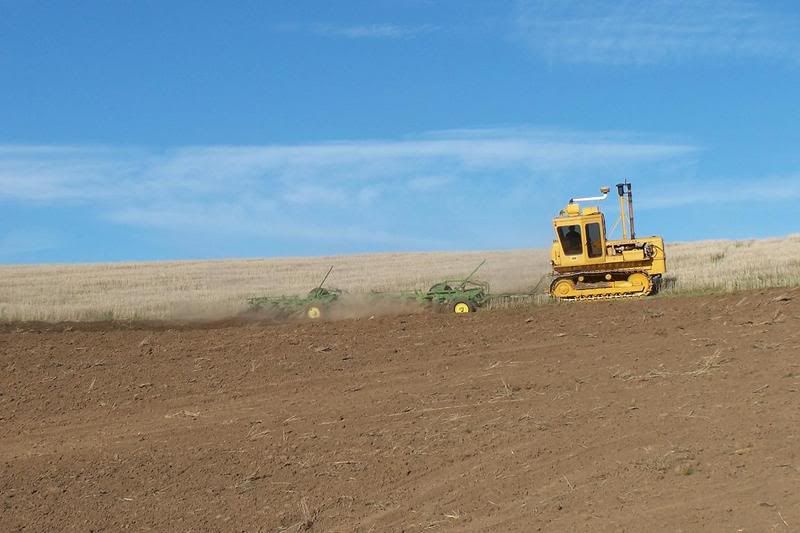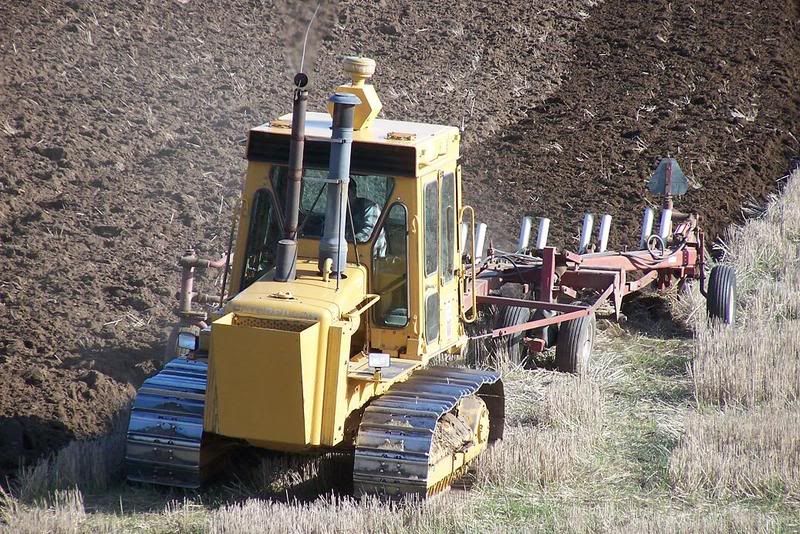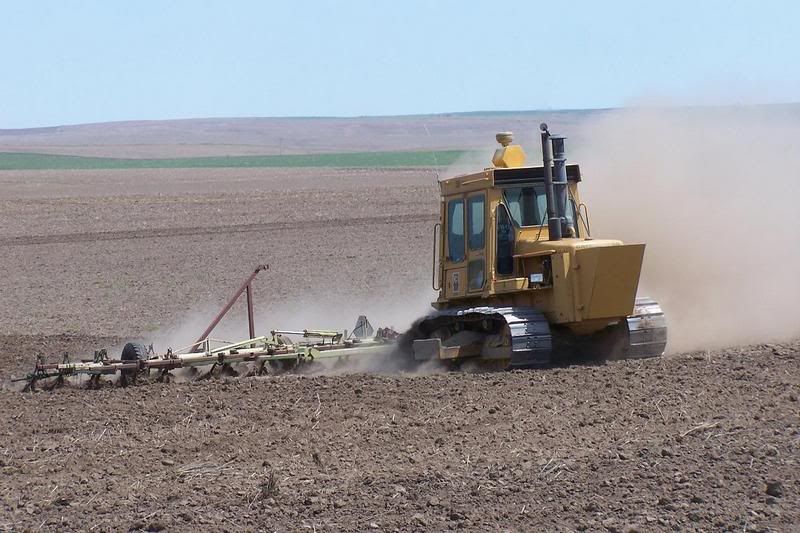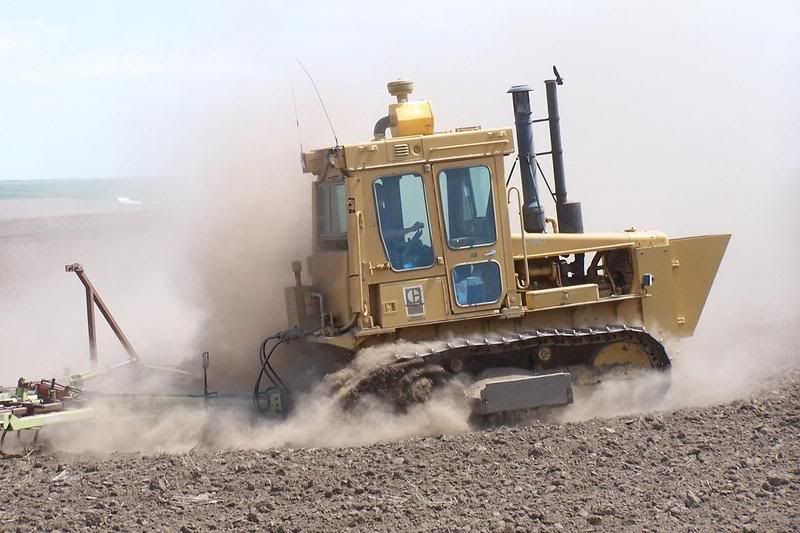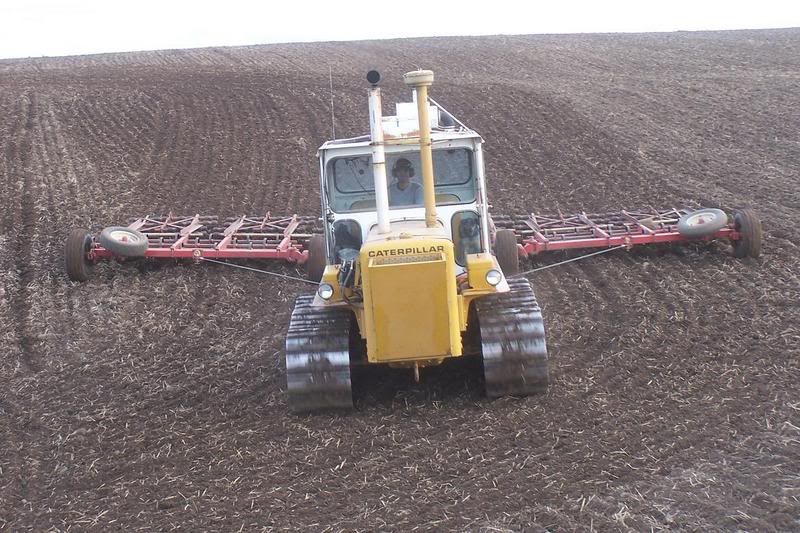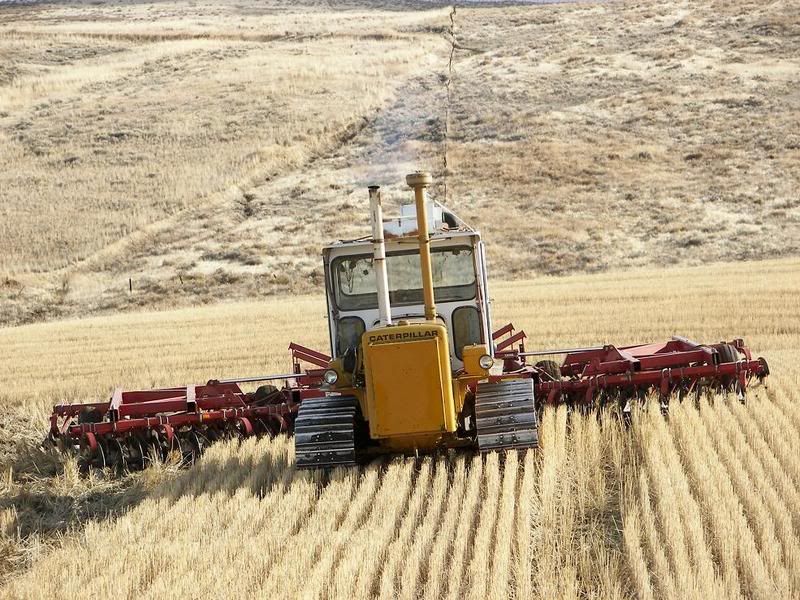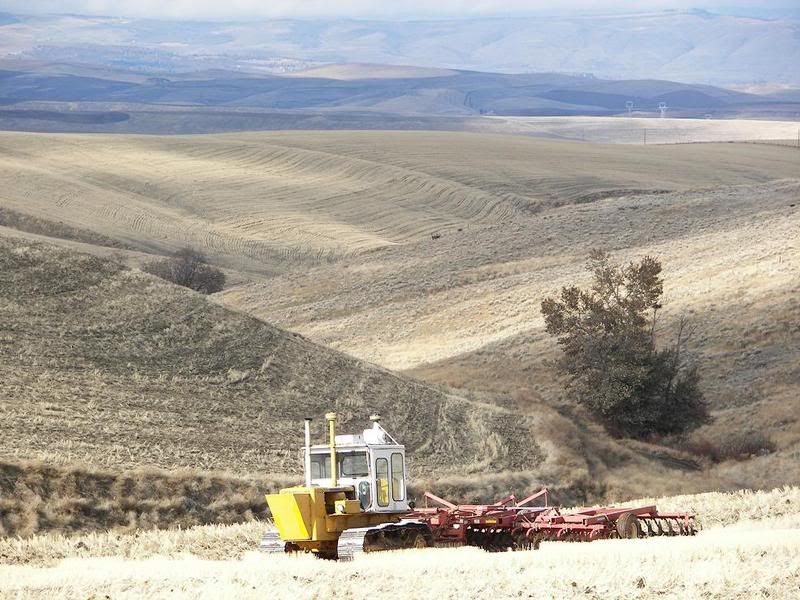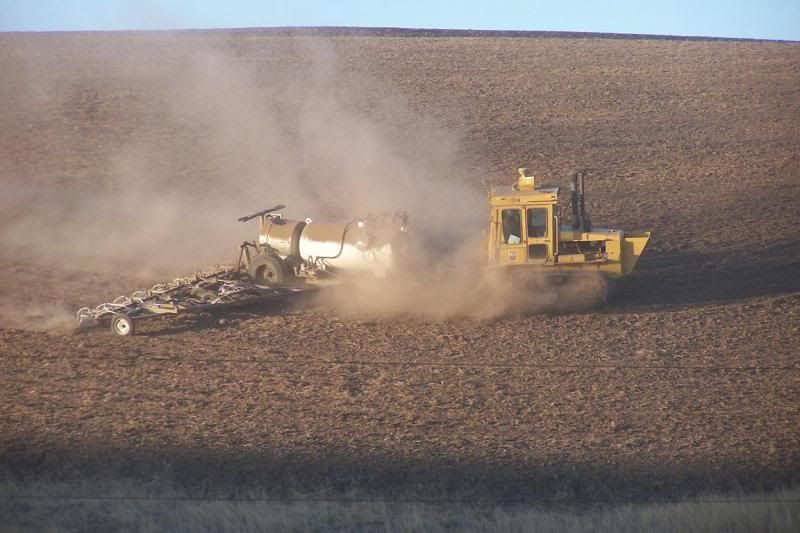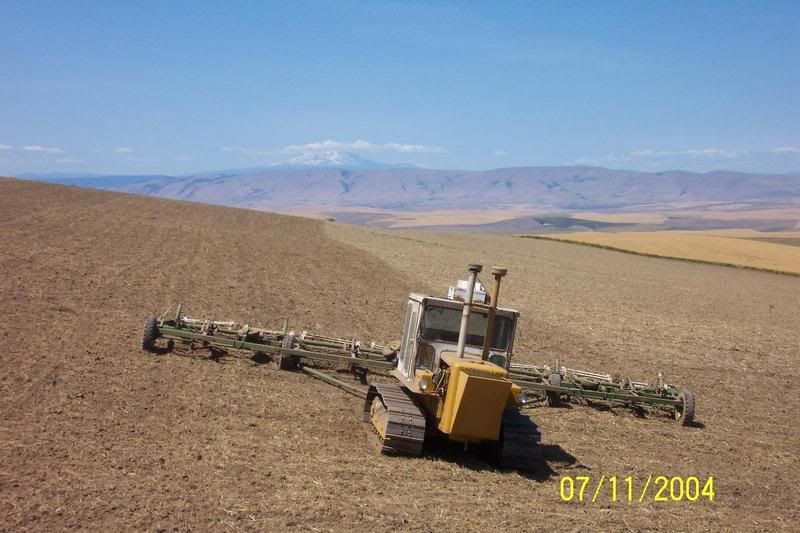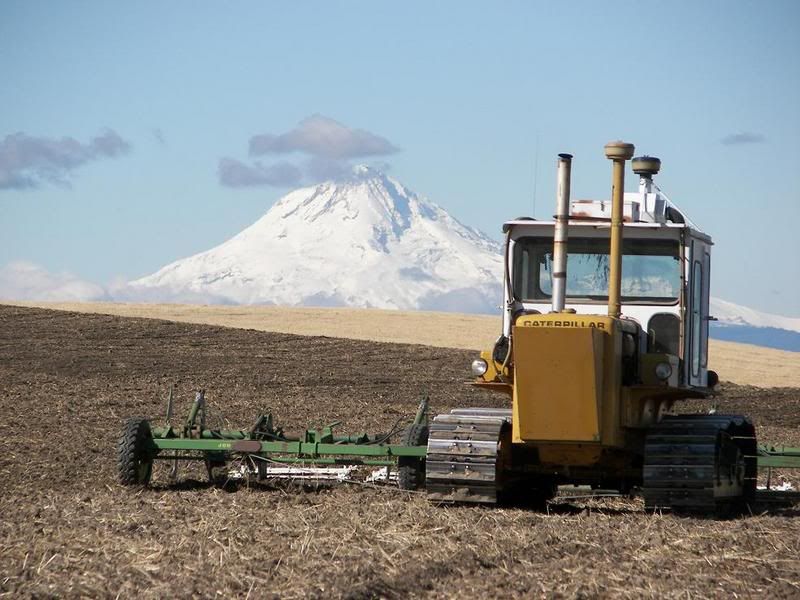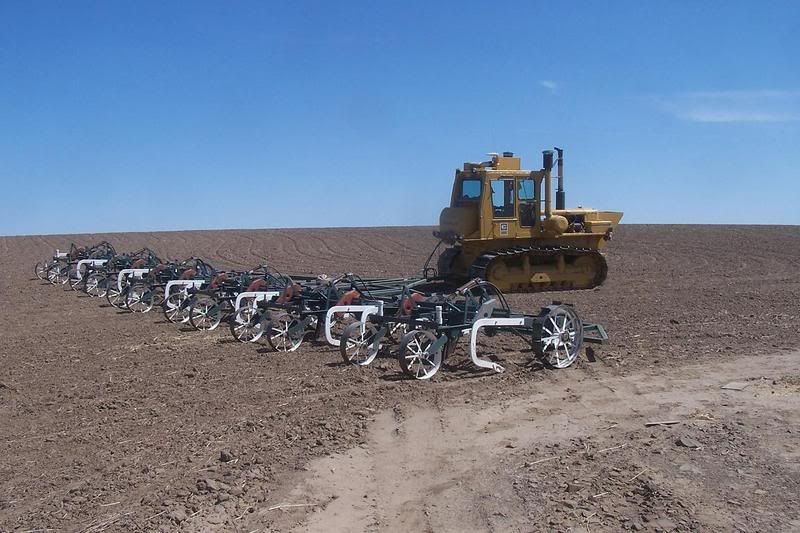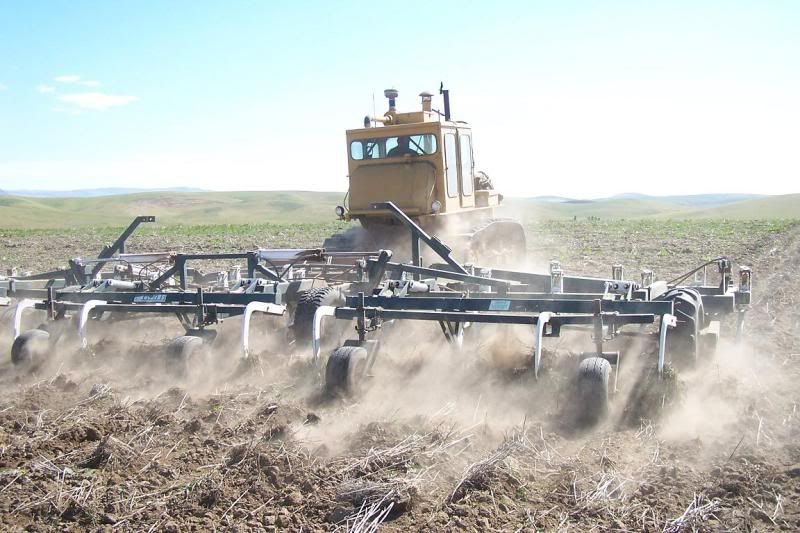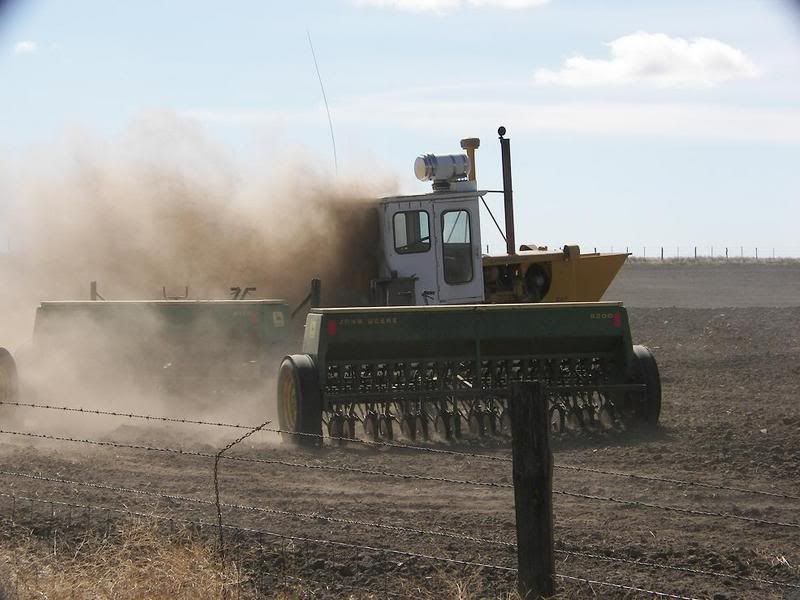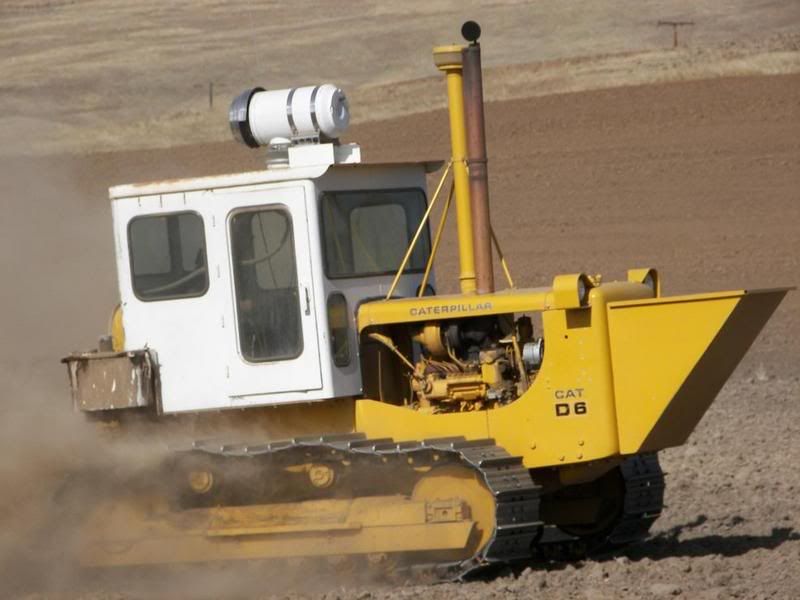- Posts: 224
- Thank you received: 0

ACMOC Membership Benefits
- FREE quarterly magazine filled with content about antique Caterpillar machines
- FREE classified listings
- ACMOC store discounts and specials
- Full Bulletin Board Access
- Marketplace (For Sale/Wanted)
- Technical Library
- Post attachments
$44 /year ELECTRONIC
$60 /year USA
$77 /year International
(pictures) farming with steel tracks
- North Idaho Farmer
-
 Topic Author
Topic Author
- Offline
- Elite Boarder
- User
I know it must be tough with anything other than winter wheat, even over here spring cereals and canola/mustard are not big moneymakers on typical years.
I really am wondering if legumes have ever been tried down your way. Garbanzo beans and lentils are both fairly drought tolerant, legumes in general dont like heat but they can deal with dryness more so than spring wheat or barley. They grow garbs and spring peas over near walla walla and pendleton to a limited extent, higher rainfall than you I know but the limitation they have is hot weather. Also down in the mini rain shadow near Lewiston I know some direct seeders that grow legumes on about 15 inches of precip but the difference is they typically get a rain month in May.
My theory for an alternative crop in dry areas would be winter lentils seeded on chem fallow, they would get a good start over winter and take advantage of that moisture earlier on before the spring crops could. Also lentils are known to put down extremely deep roots to get moisture, our topsoil obviously turns into rock someplaces but up on top it goes to hard clay fragipan within 30 inches. In the palouse they did studies that found lentils roots at over 5ft deep. Plus weeds wouldnt be as big of deal, I wouldnt think you could have too many broadleaf weeds growing nothing but wheat and fallow.
Marketing would be the main issue along with the harvest and rocks but where there is a will there is a way.
Idea # 2 is camalina, a new oilseed. They started growing it in Montana 5 years ago and they say it goes good in the wheat-fallow areas there. Neighbor here tried some this past year, marginal results but we are probably not an ideal location for it. It is hardy enough to be fall planted even though it is a spring crop, the best results are actually dormant plantings where the seed is drilled in late fall but doesnt germinate until it warms up in the spring. So that might be one that could be planted without chem fallow.
Just the thoughts from a guy that is worrying about an excess of moisture in the coming months rather than a lack of.
Keep up the outstanding pics, you might want to put up a few more of yellow paint just to keep the thread on track.
Please Log in or Create an account to join the conversation.
Jim
Please Log in or Create an account to join the conversation.
Thanks for all the very interesting pictures of western farming practices. I would like to spend some time out there rather than just drive through.
Chuck in cold snowy Illinois
Please Log in or Create an account to join the conversation.
OK......all yellow........and all steel. I promise.
There was a lot of farming on steel out here well into the 90's. As talked about
above, right around here we have a limited amount of moisture, and the timing of it is funky. So.......a wheat/ fallow rotation. Starting in the spring when it dried out enough......plowing. My D5SA pulling 9 eighteens, son Brad at the controls. There is just something about smokin the dirt over with a moldboard plow:
Set of doubles behind a neighbors D5;
D5BSA:
Please Log in or Create an account to join the conversation.
Please Log in or Create an account to join the conversation.
- North Idaho Farmer
-
 Topic Author
Topic Author
- Offline
- Elite Boarder
- User
- Posts: 224
- Thank you received: 0
CL Bos- yep I agree lentils soup is a good meal, however for some reason that only lentils sold in grocery stores in the U.S. are the one with less flavor. Usually large yellow (brewer) and large red (red chief) are sold here. We used to grow both those varieties but they dont yield as well for us. They dont taste as good as the small ones, especially our spring lentil variety a small spanish brown type "pardina" nearly everyone nearby grows pardinas and then we have our small turkish red winter lentils. These are all exported, when ever we talk to someone that likes lentils we send them a bag of the ones we grow and every time they say the flavor is much better.
check out the difference in the look of the lentils, we grow morton and pardina, you probably eat brewer or red chief.
www.ars.usda.gov/Services/docs.htm?docid=2426
Please Log in or Create an account to join the conversation.
& more of it here as the government regulations about run off became tougher.
So, park the bottom plows and break out the disk.
I have done it both ways, and given a choice I prefer to hit the stubble in the
fall ( say Nov) with a light shot with the disk.
Others prefer to wait till spring, as per bottom plowing. The best is to hit it first with a shot of Roundup and delay the tillage. Either way the next step is to get busy with a chisel:
Please Log in or Create an account to join the conversation.
I preferred to fertilize in the spring. Others would rather do that operation after
harvest. I liked a spring application. An anhydrous applicator tends to tear open
the ground; getting the NH3 in the ground early allowed you to work at keeping
the ground sealed up so you could retain moisture. A D5B pulling a 50 foot double shoot applicator, putting down 60 to 70 lbs of NH3 and 10 lbs or so of
sulfur.
A similar applicator behind my D5, getting ready to start the day.
Please Log in or Create an account to join the conversation.
Mc Kinney Ranch near Fulton Canyon in Sherman Co. Oregon......a classy D6C
with 60 feet of Trash Masters. This Bad Boy is still earning it's keep......new
pictures of it coming this spring:
Calkins Cultiweeder behind a D6C:
Please Log in or Create an account to join the conversation.
ground. Lots of options here. Up high where I live on Center Ridge ( 2700') it's
pretty easy to hold moisture. If it rains a little, say lat August or early September, the moisture will 'meet' with what you saved over the summer. Then
seeding is pretty simple....work it to kill that last flush of weeds ( especially cheat grass) and head out with the double disks: D6B
Please Log in or Create an account to join the conversation.
ACMOC
Antique Caterpillar Machinery Owners Club
1115 Madison St NE # 1117
Salem, OR 97301
support@acmoc.org
"I became a member recently because the wealth of knowledge here is priceless."
- Chris R
"I also joined a year ago. had been on here a couple of times as a non-member and found the info very helpful so I got a one year subscription (not very expensive at all) to try it out. I really like all the resources on here so I just got a three year. I think its a very small price for what you can get out of this site."
- Jason N




